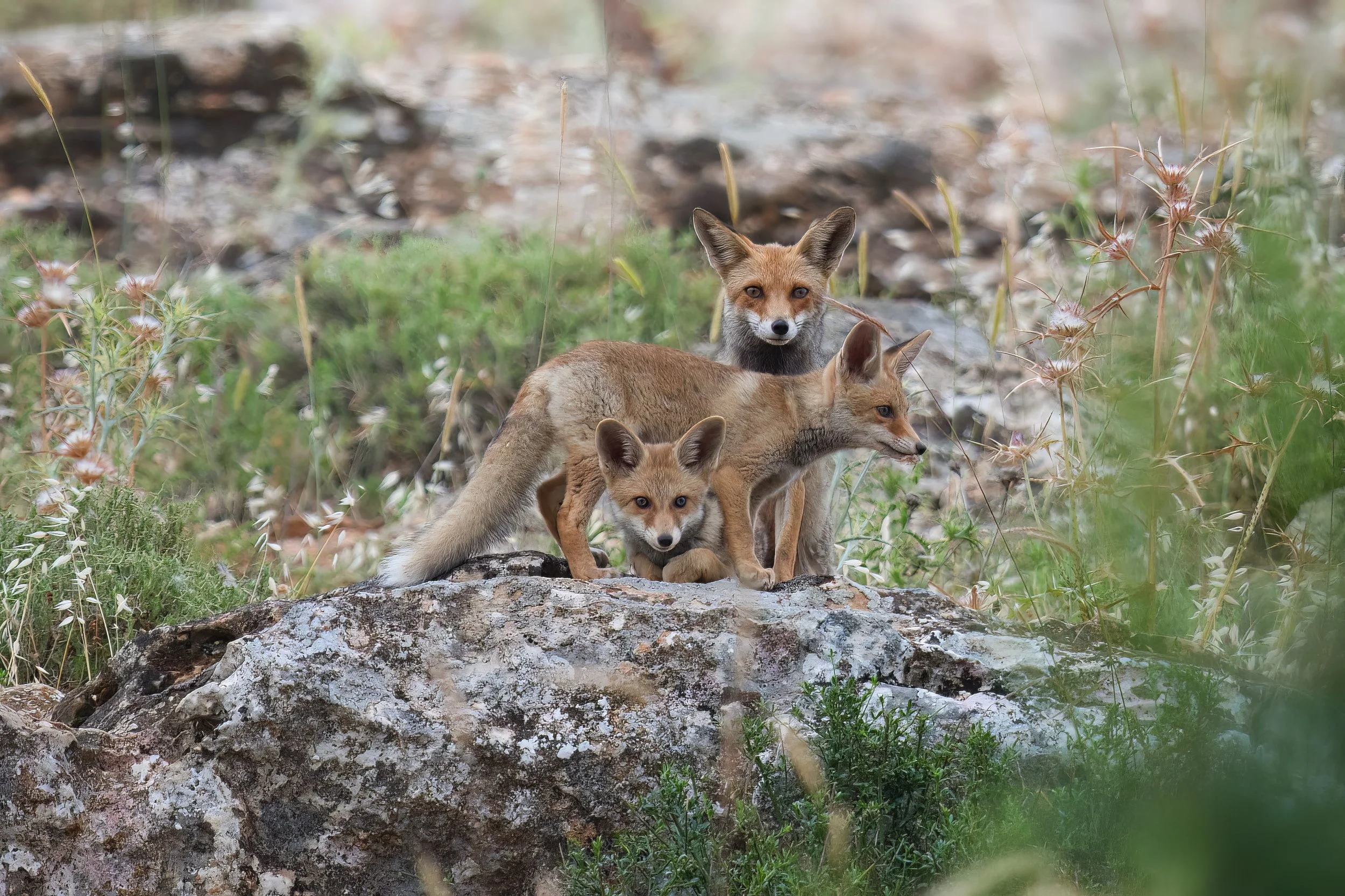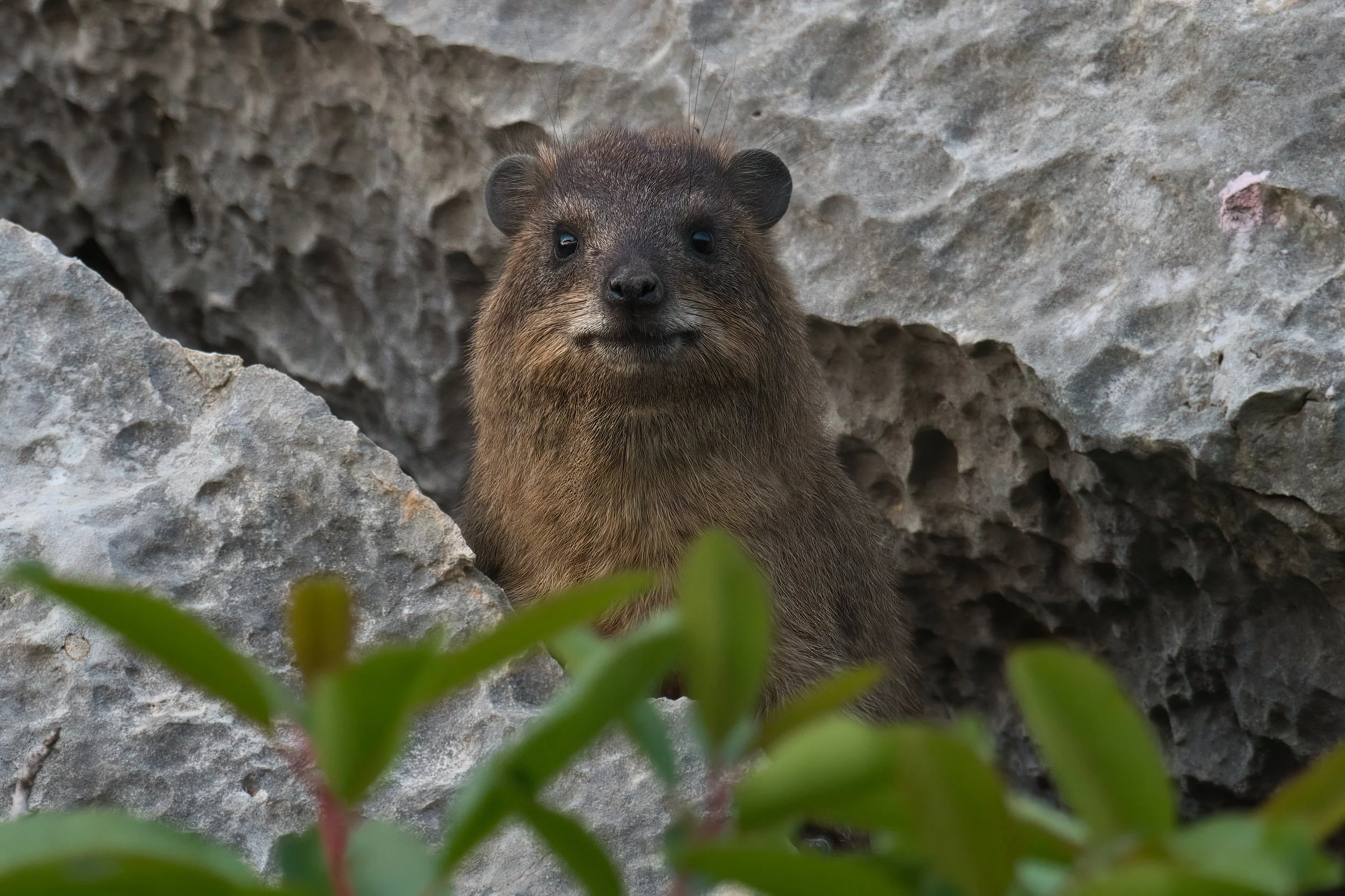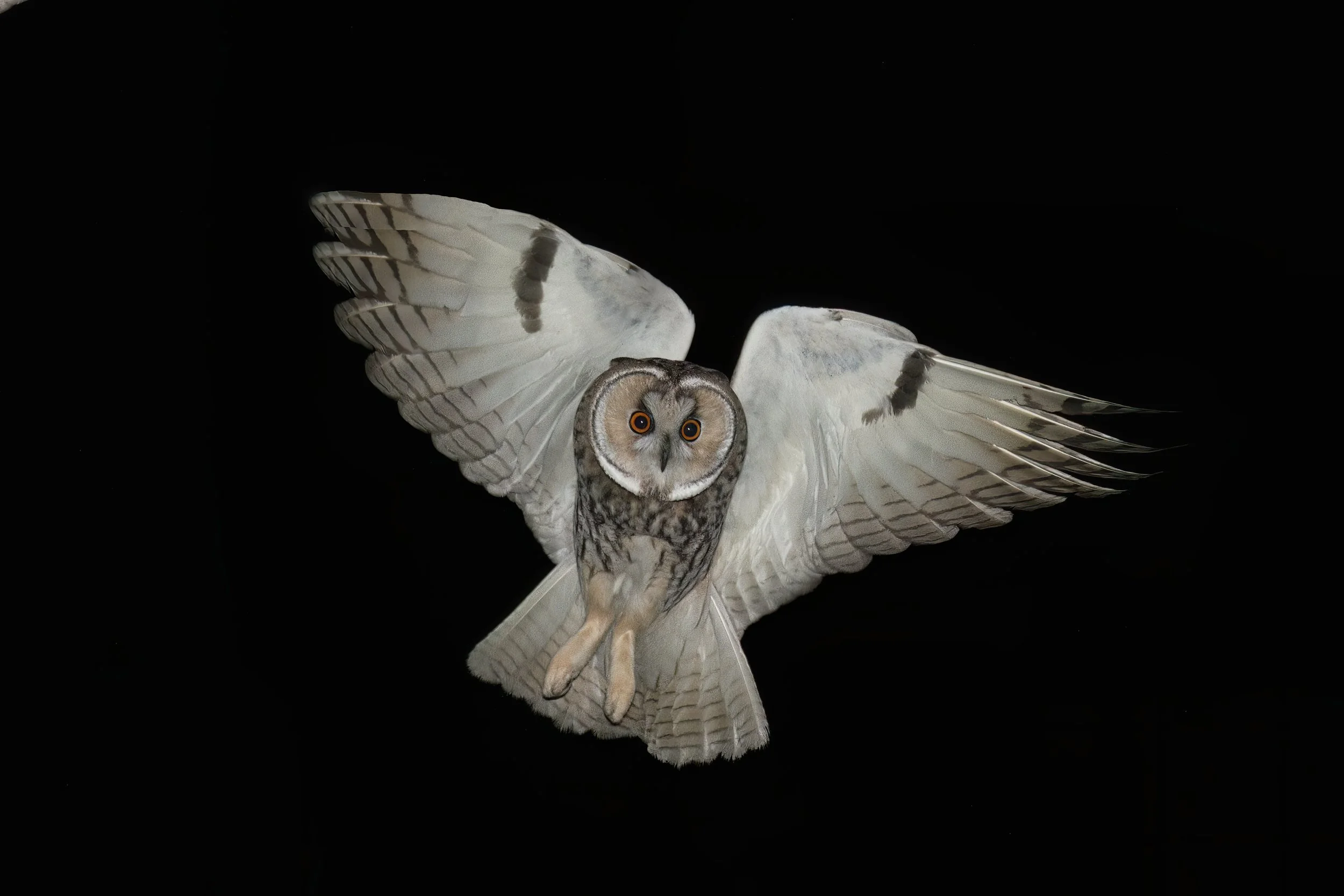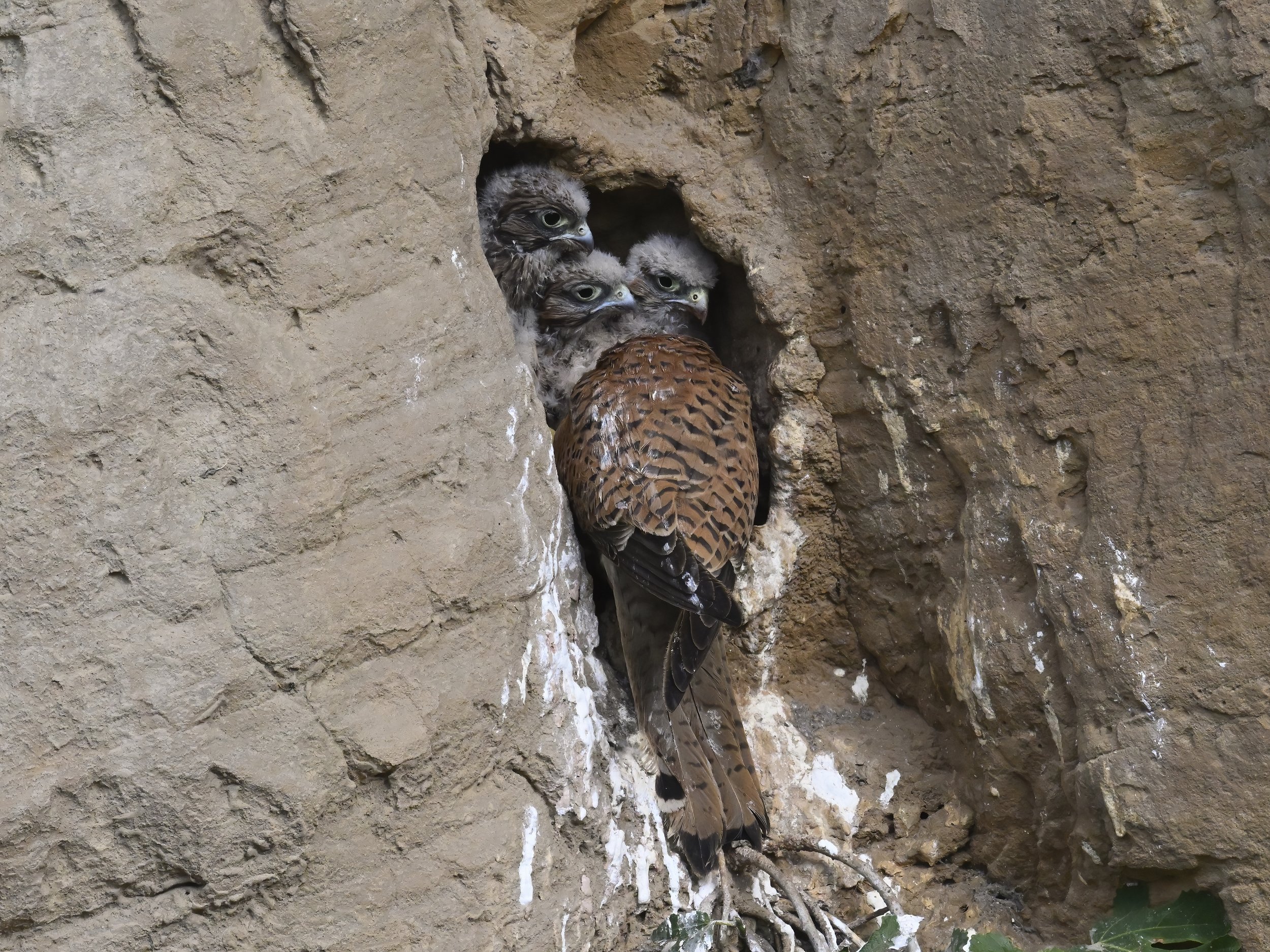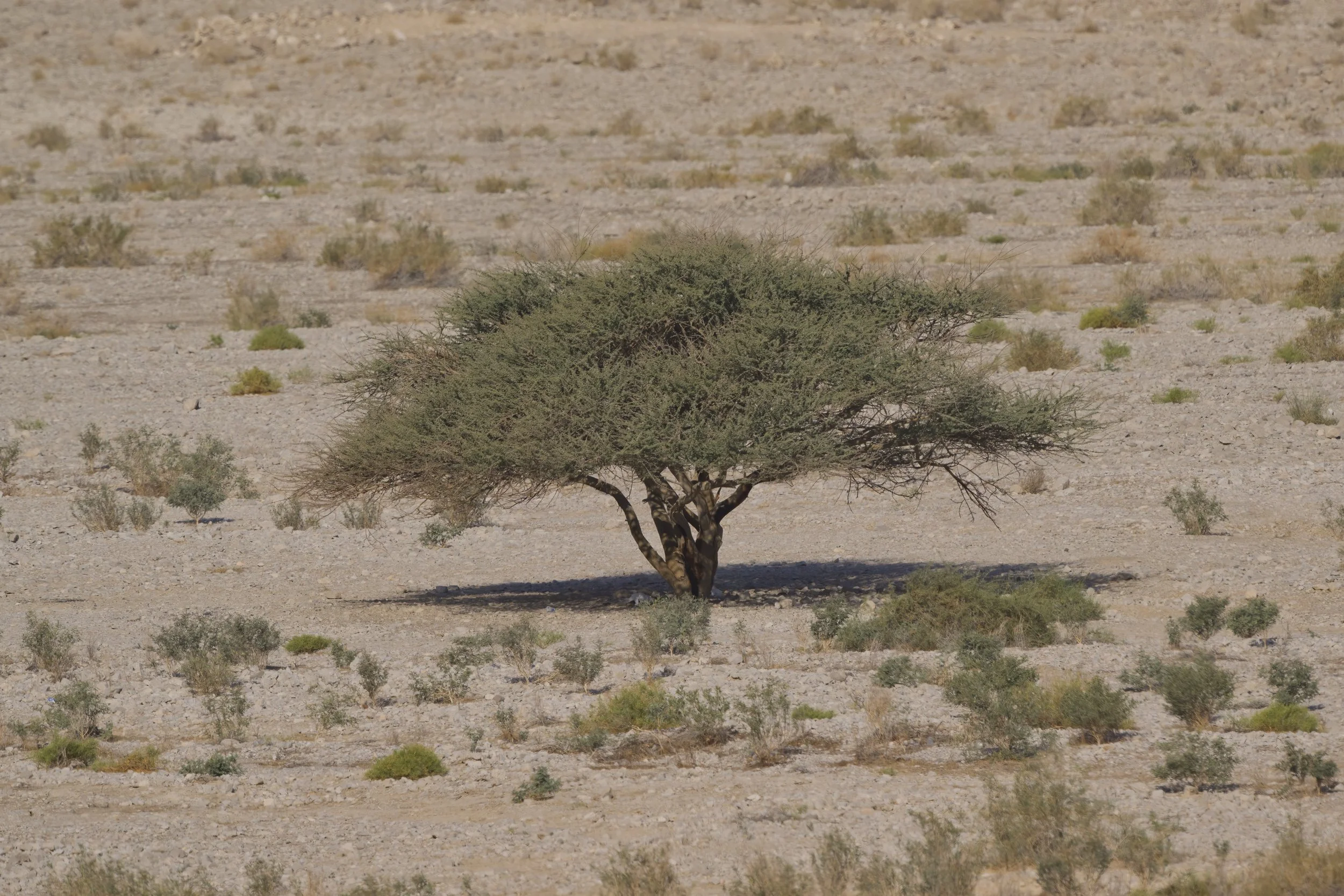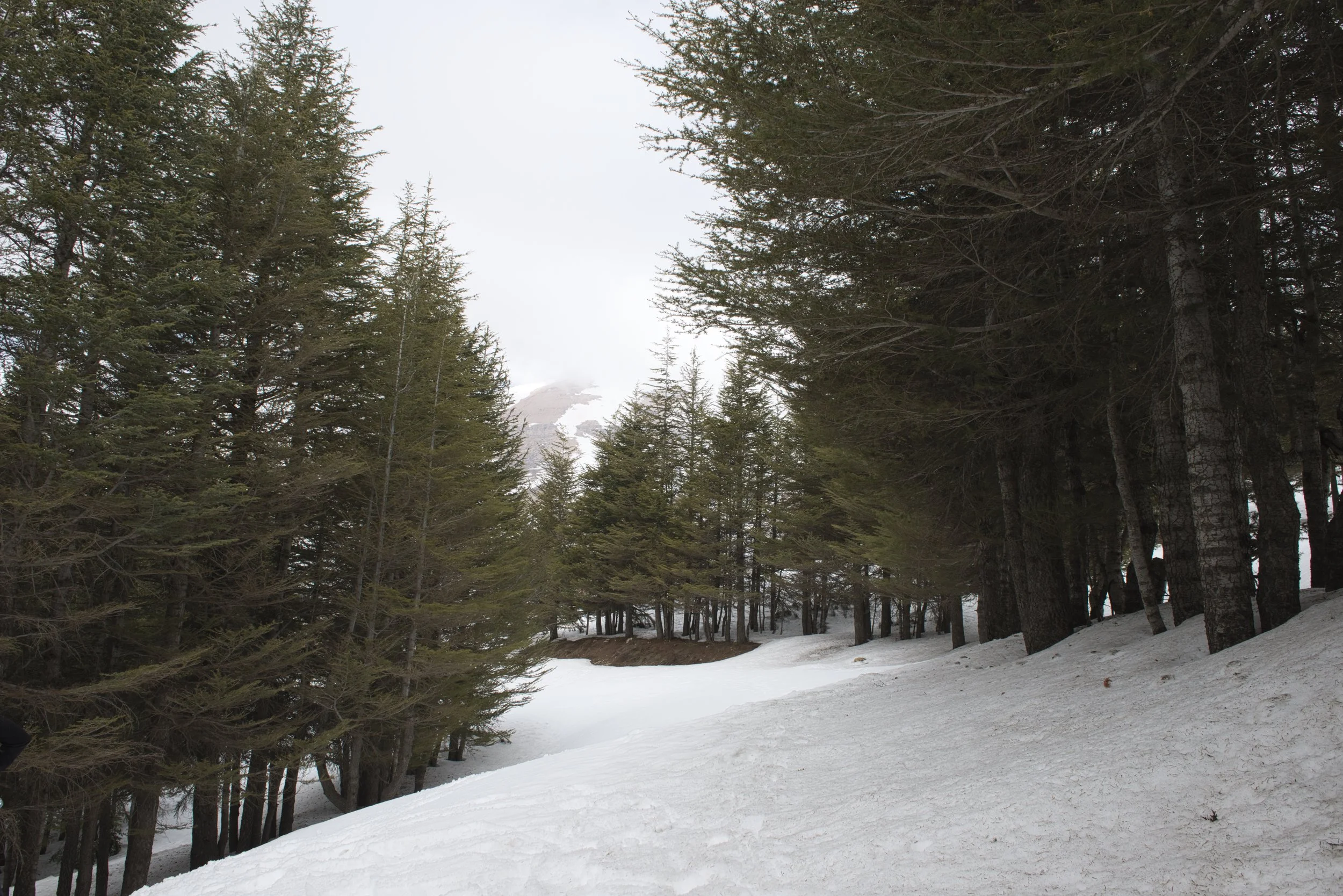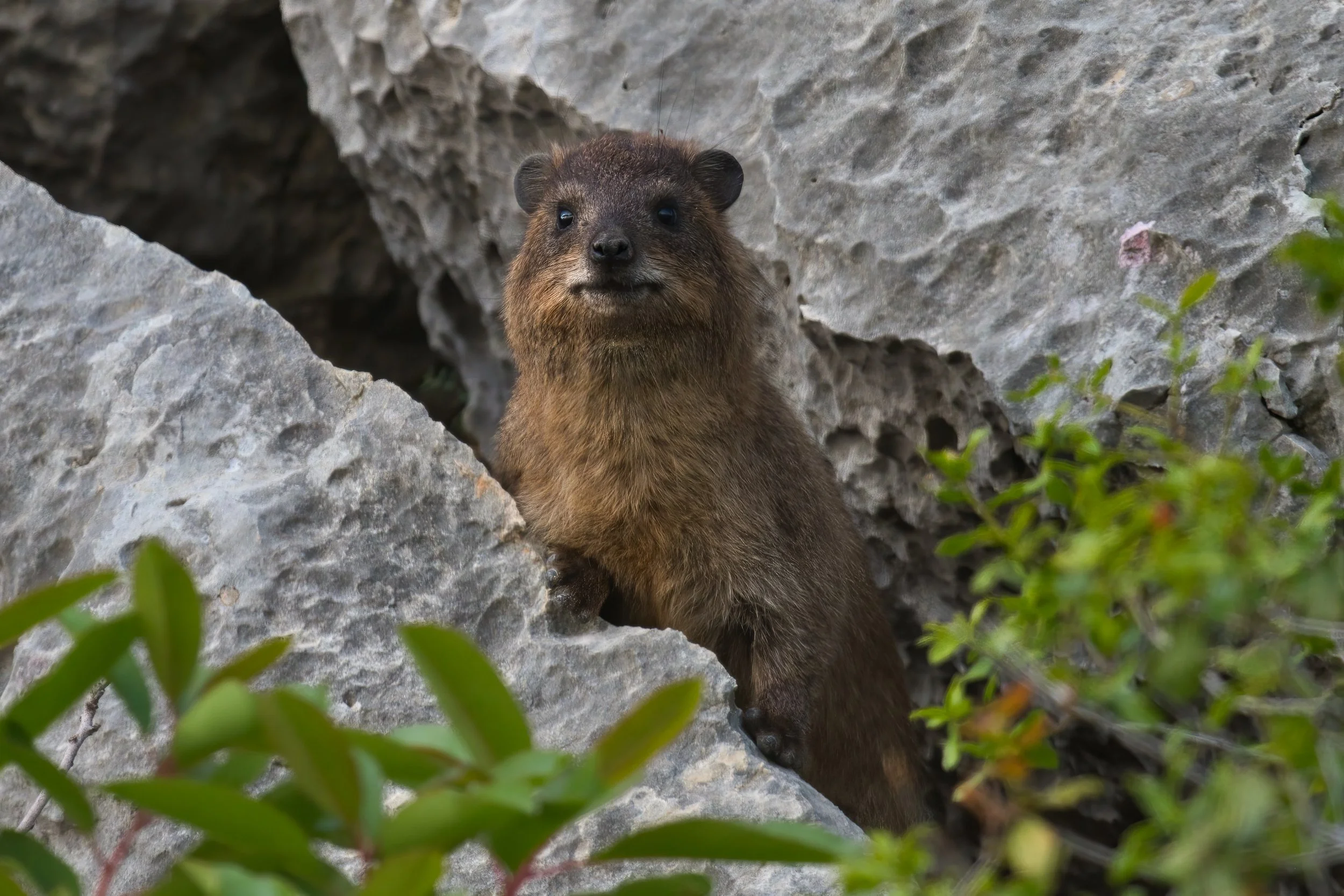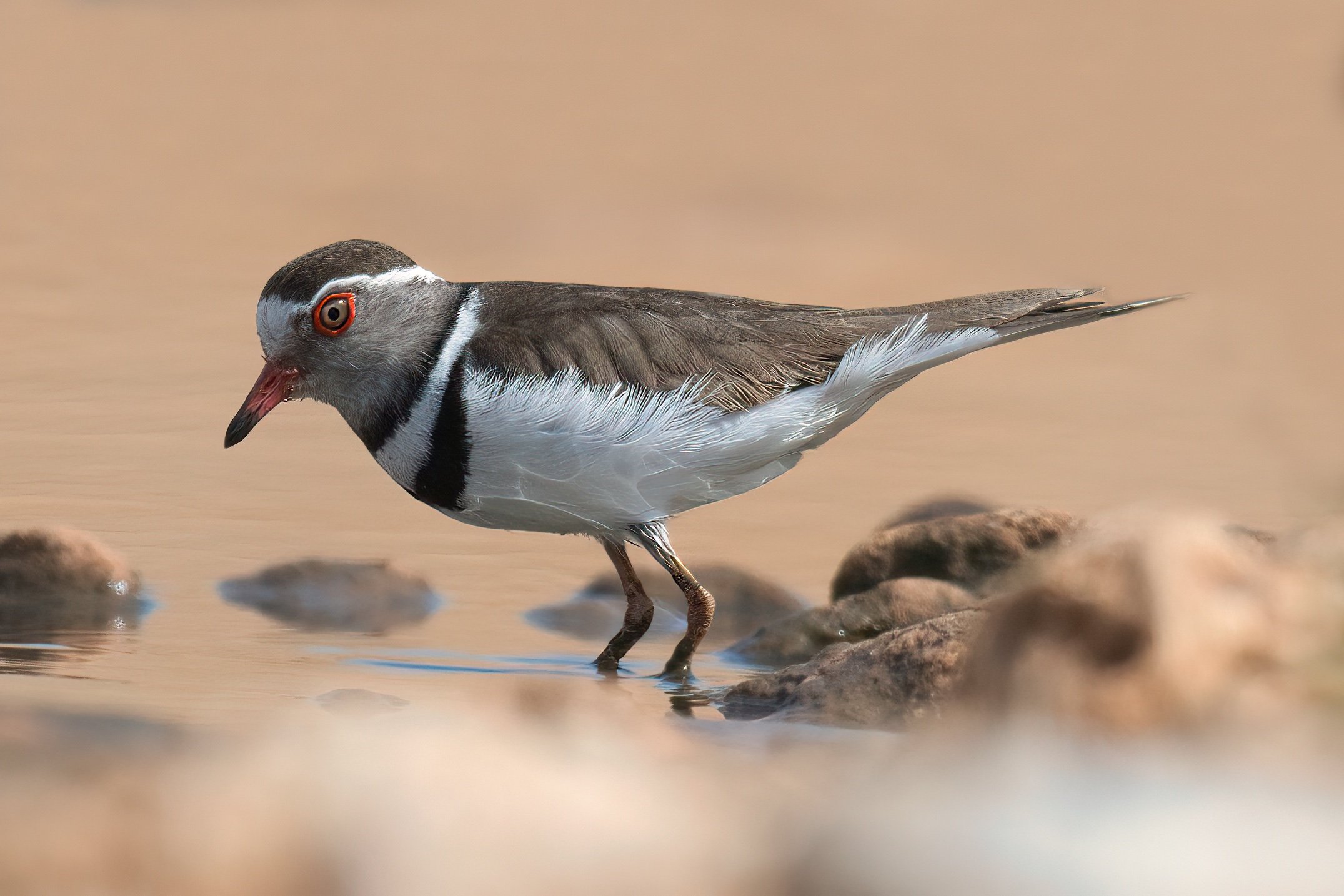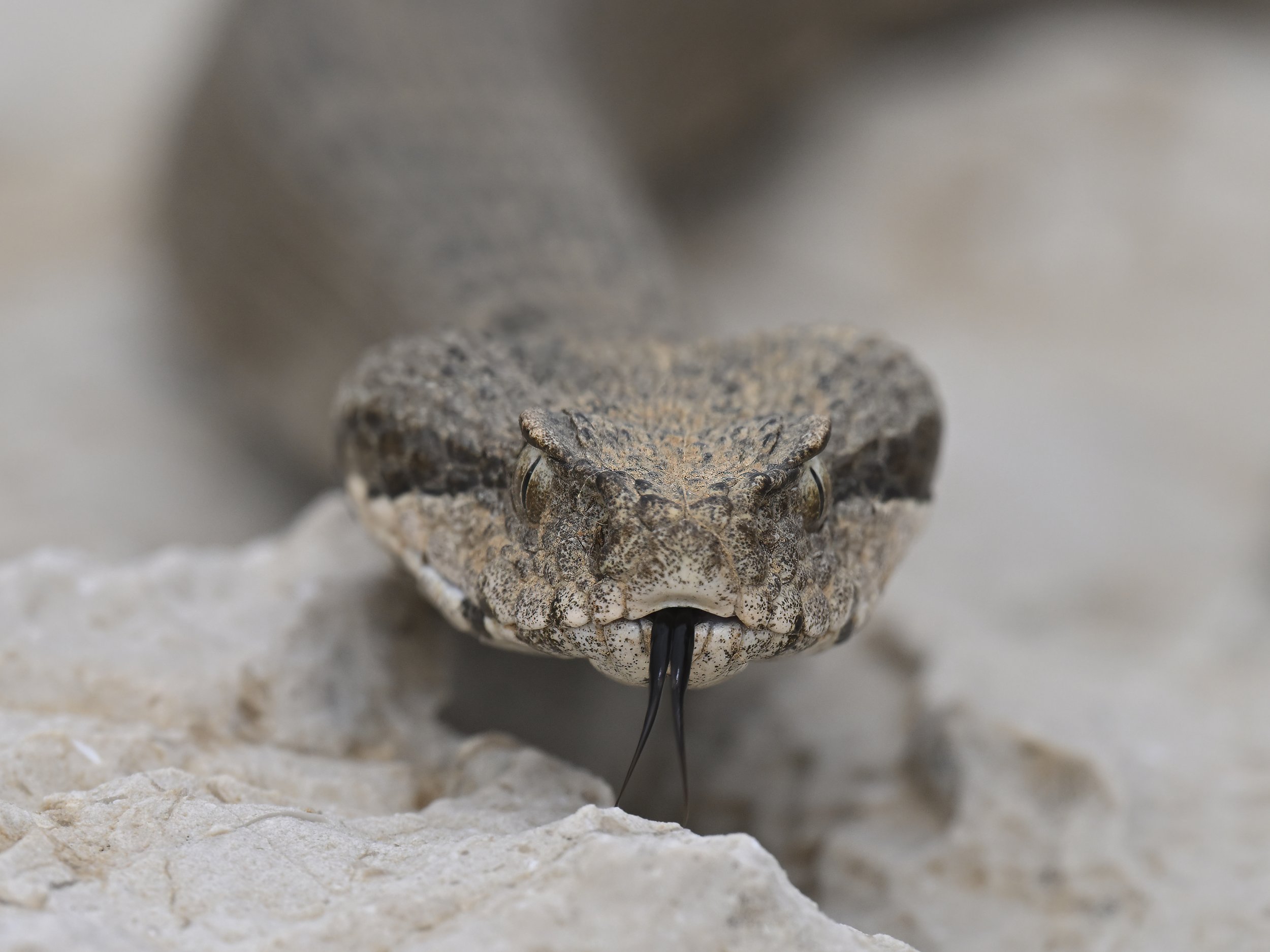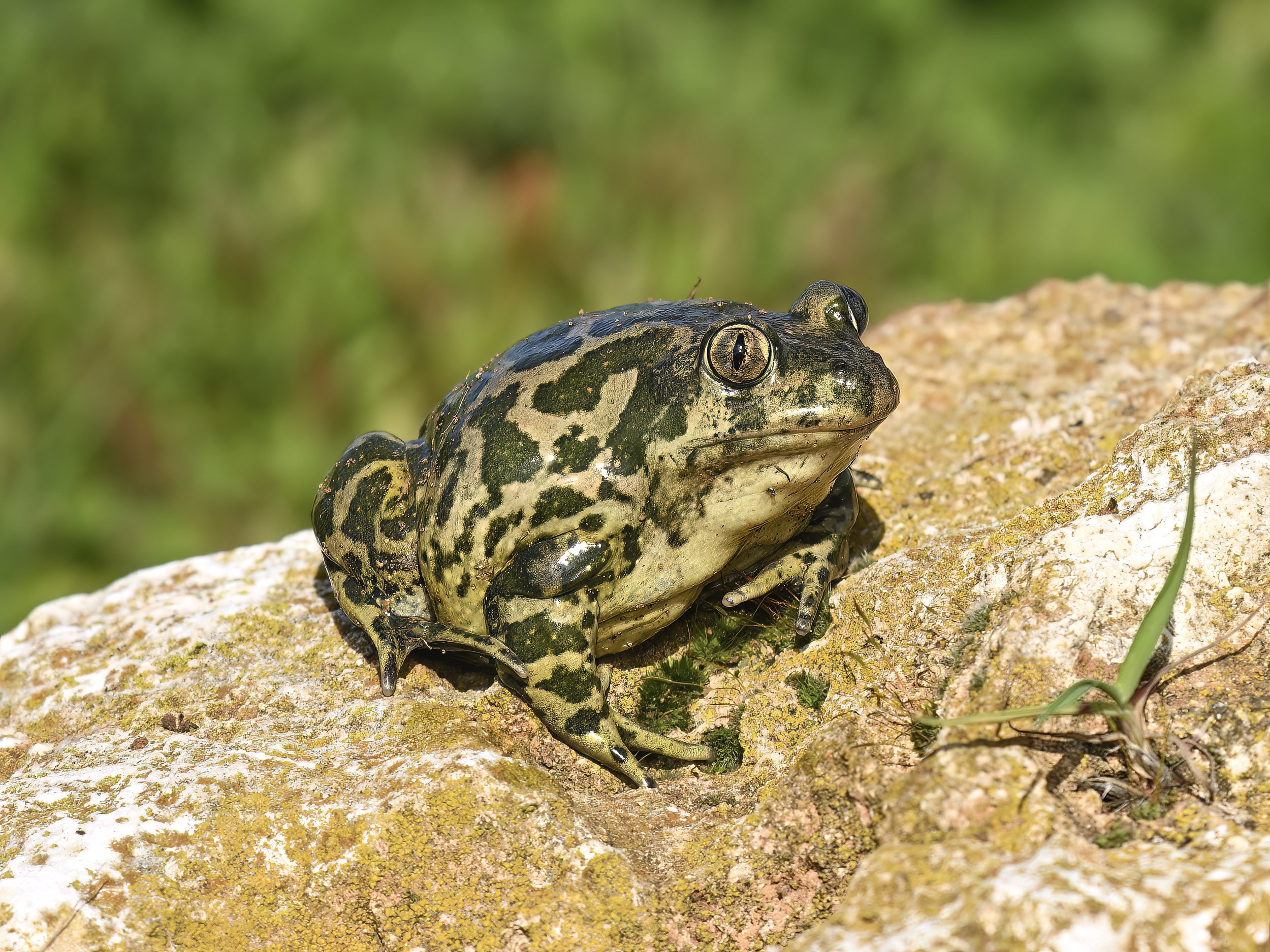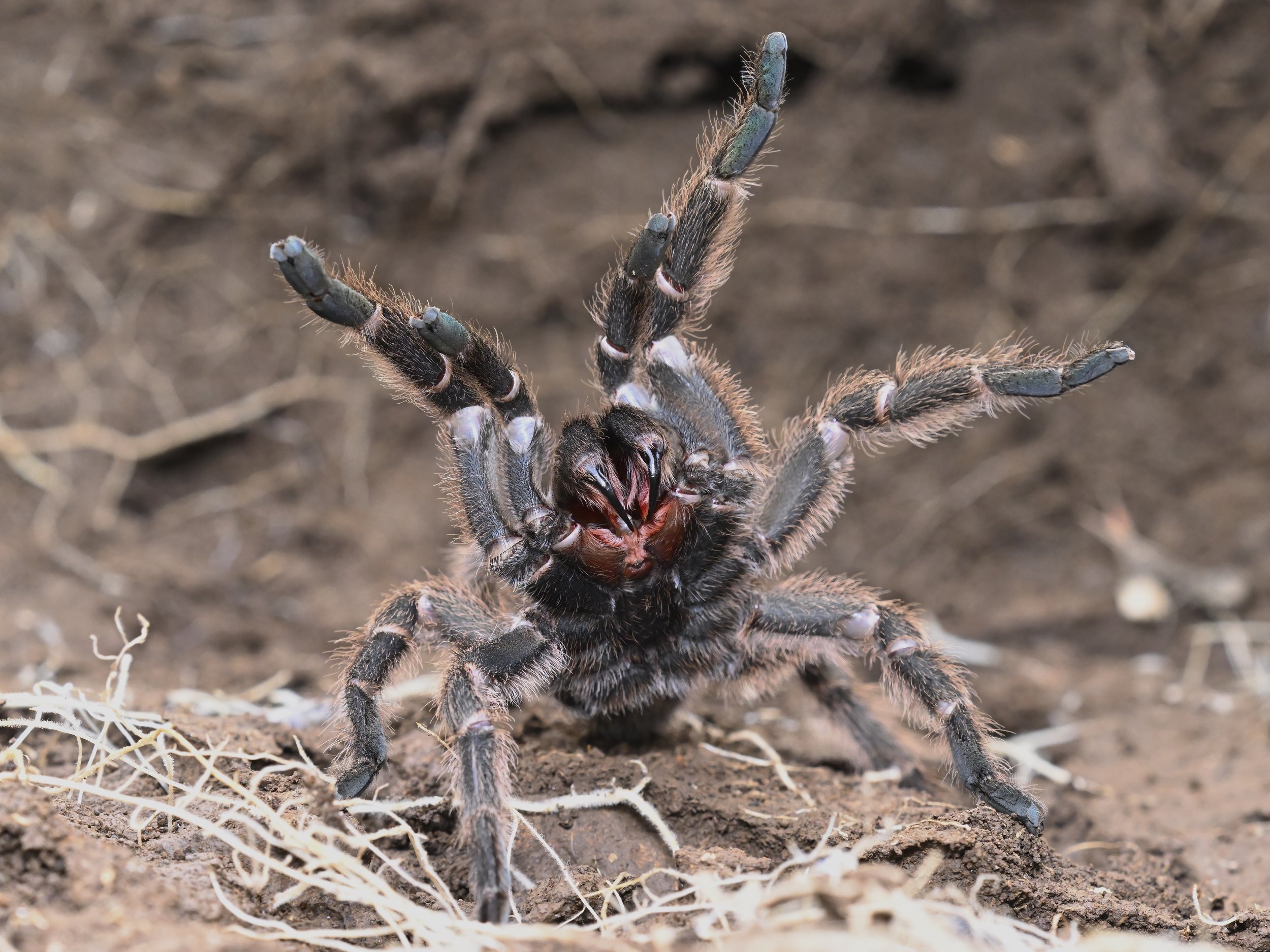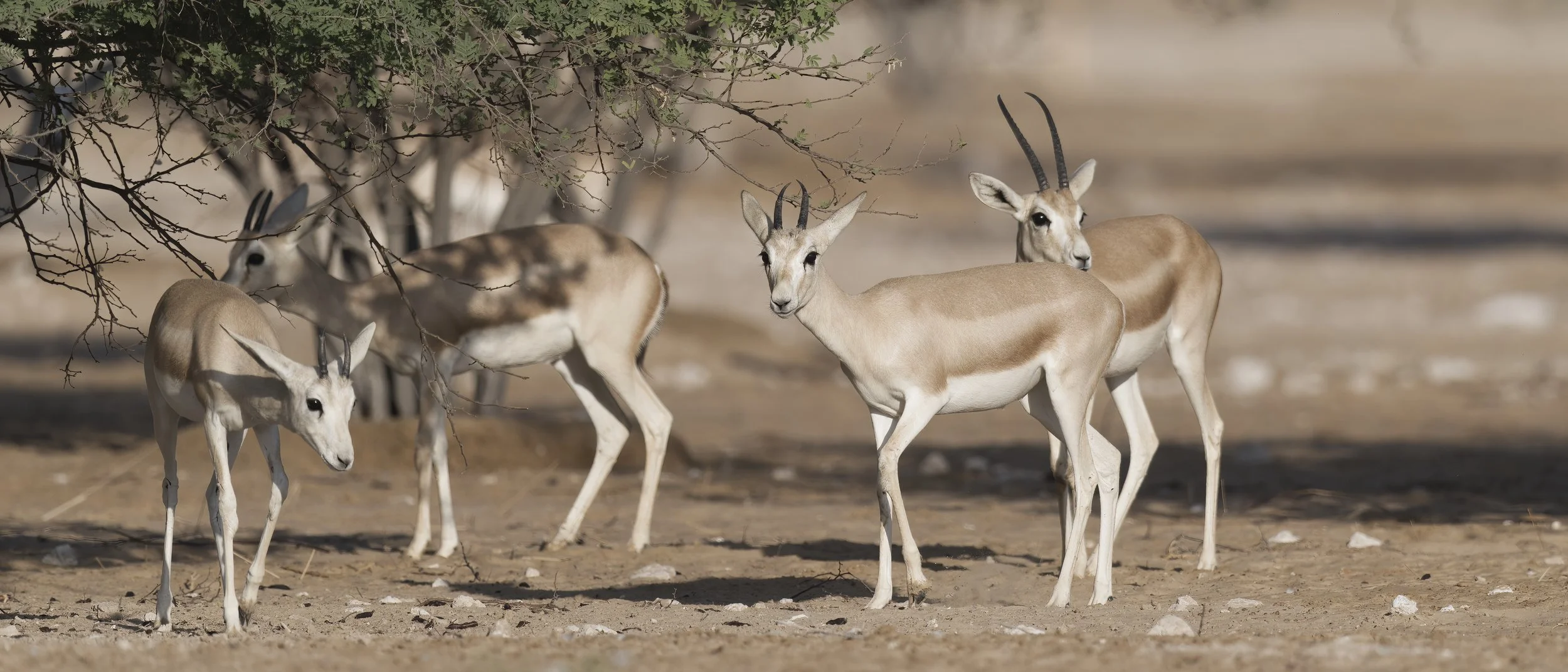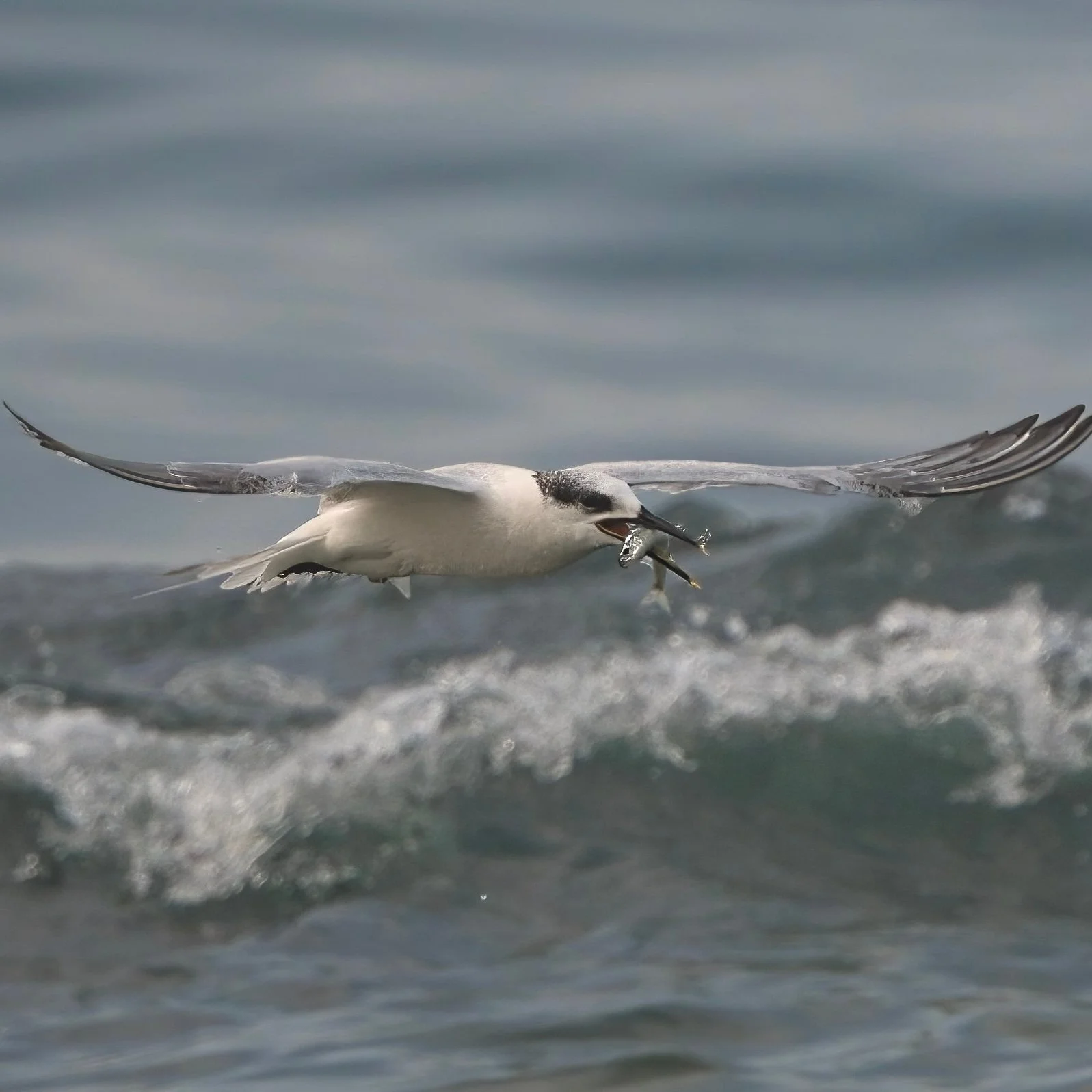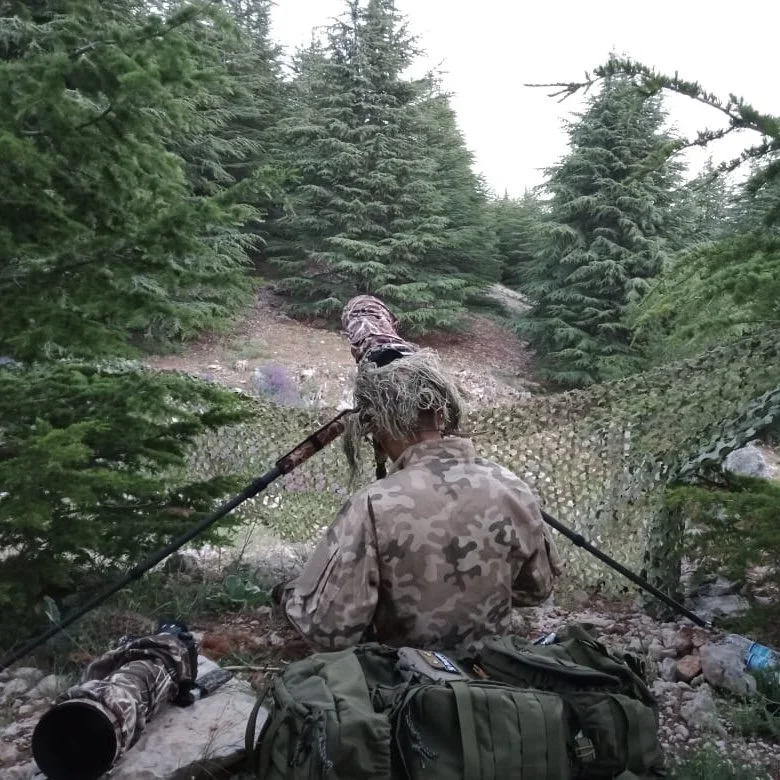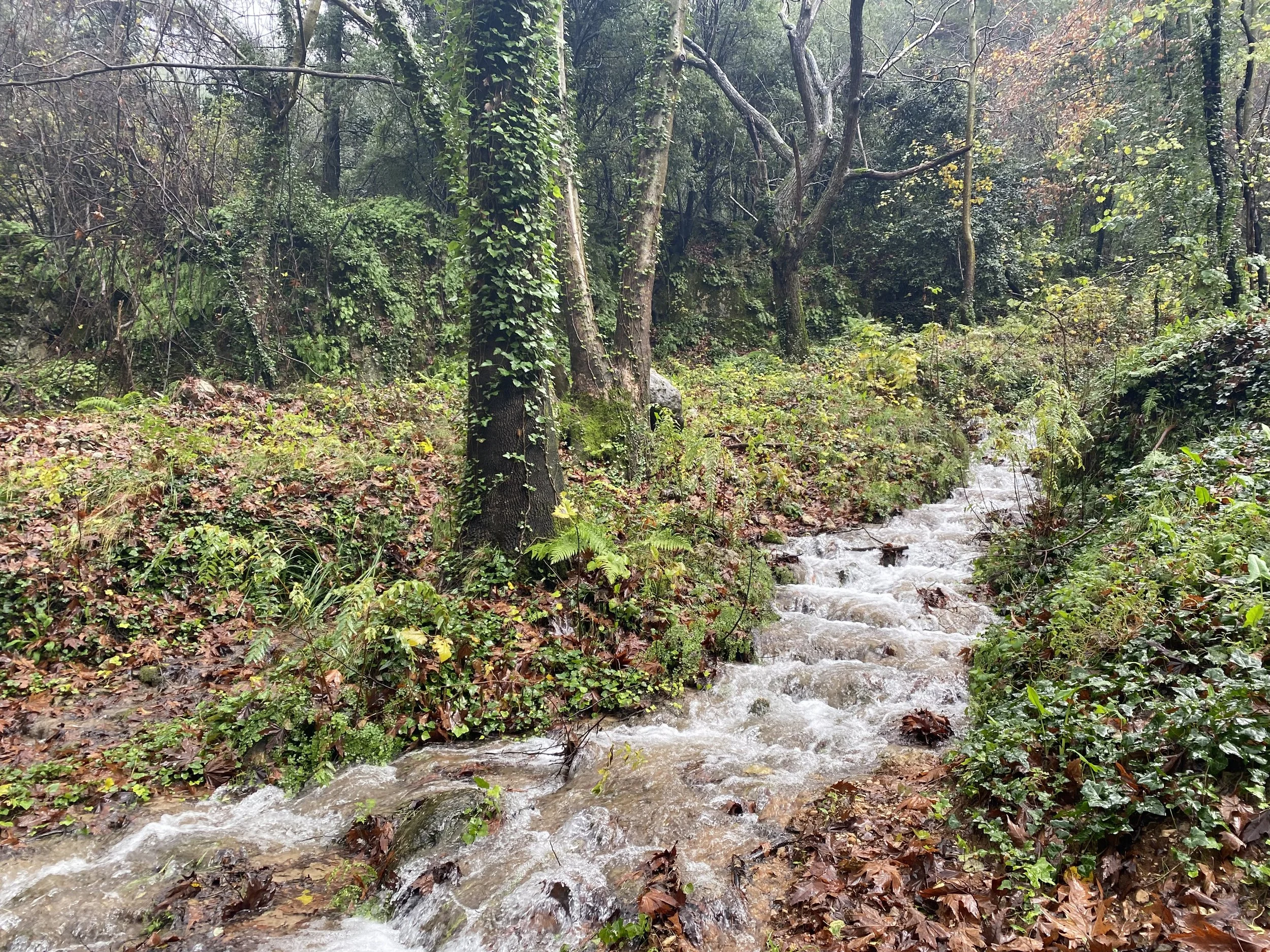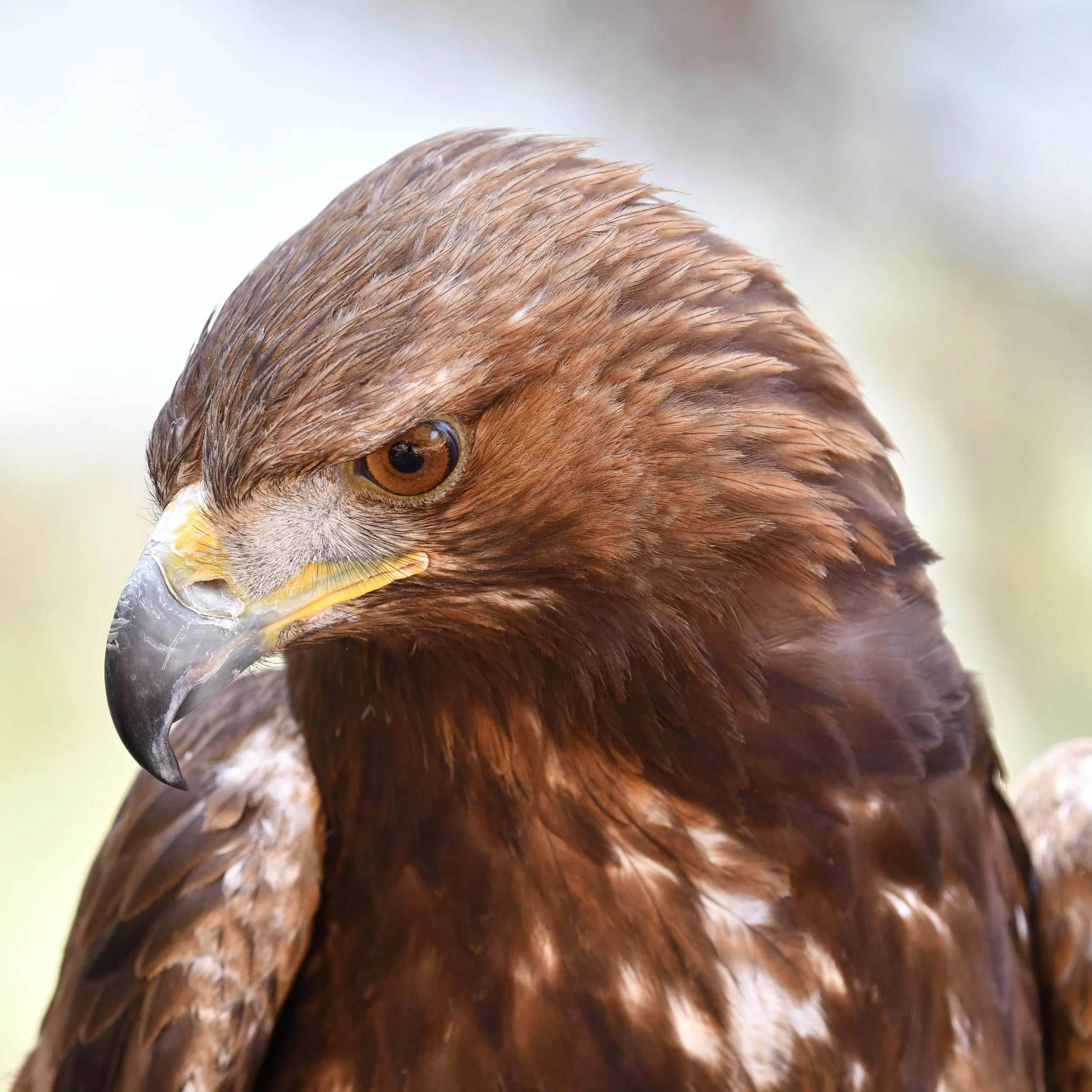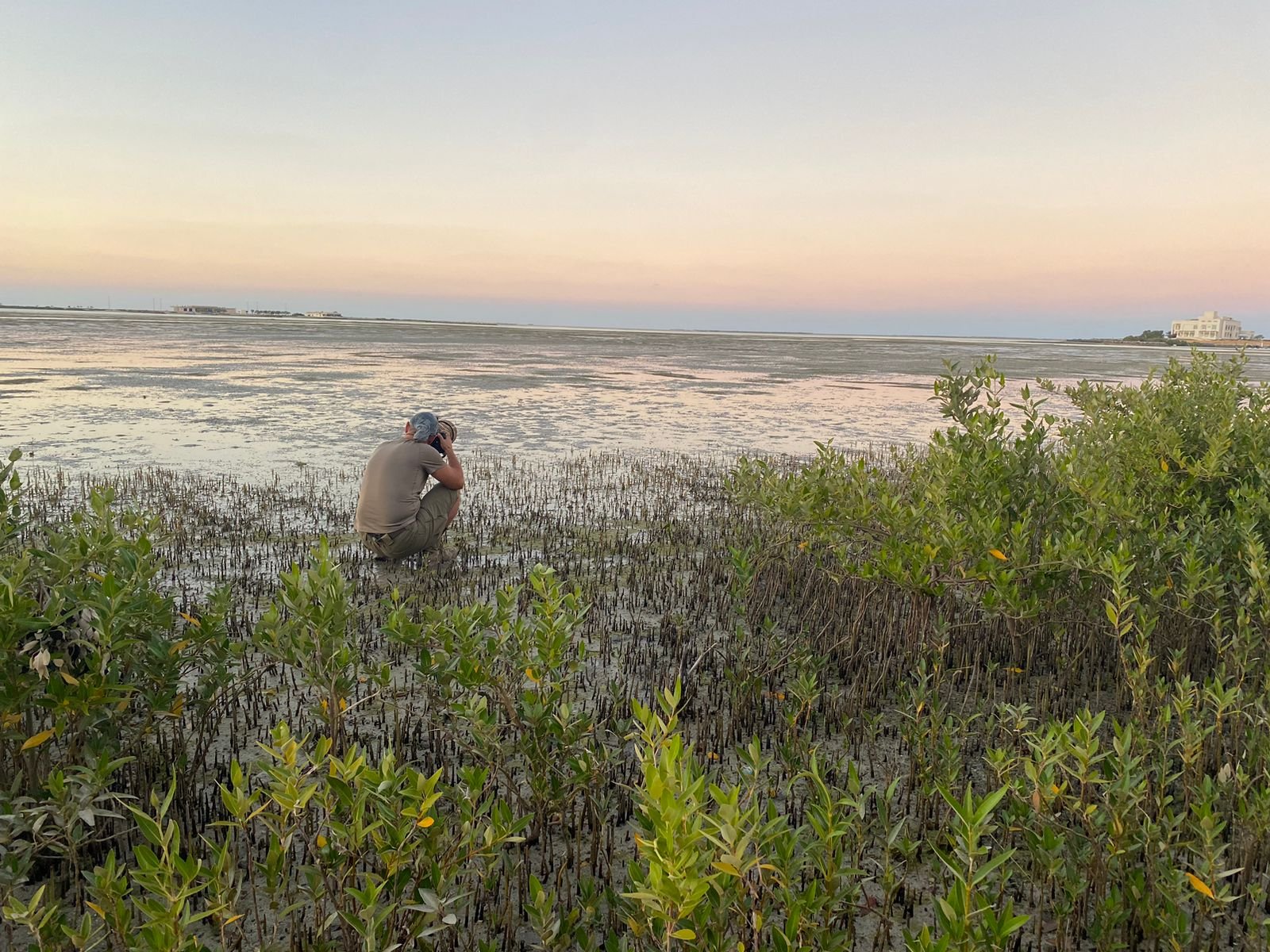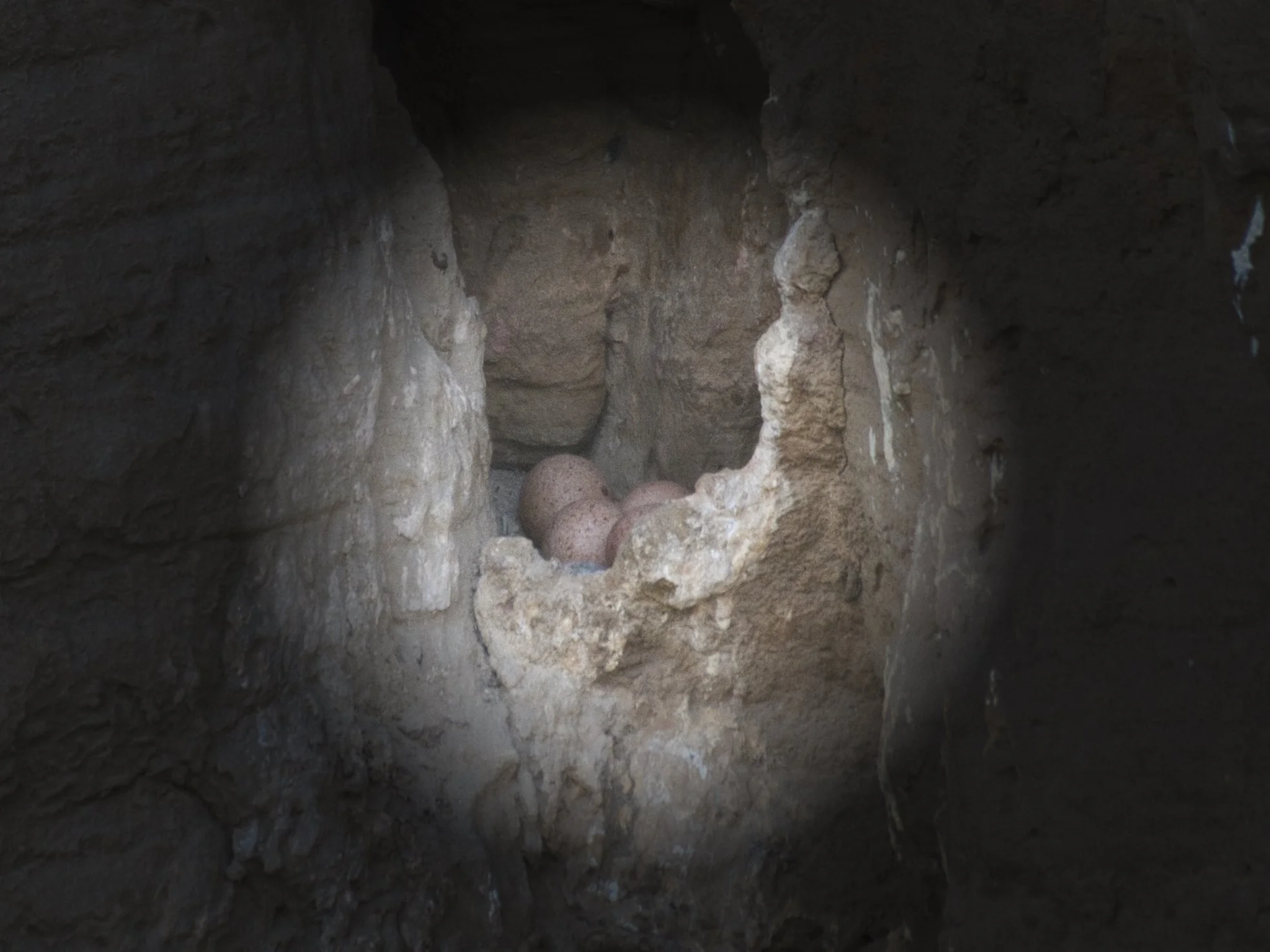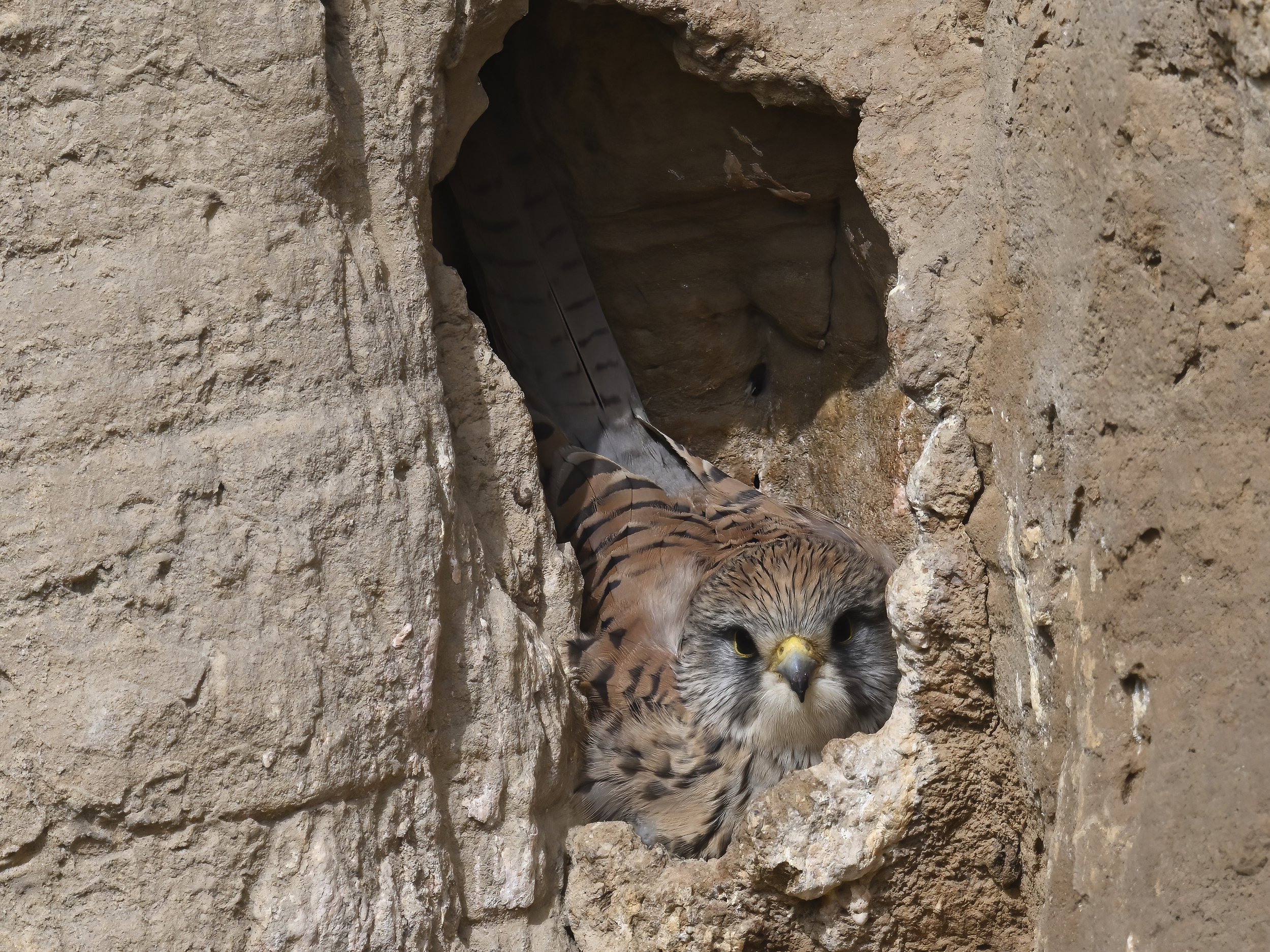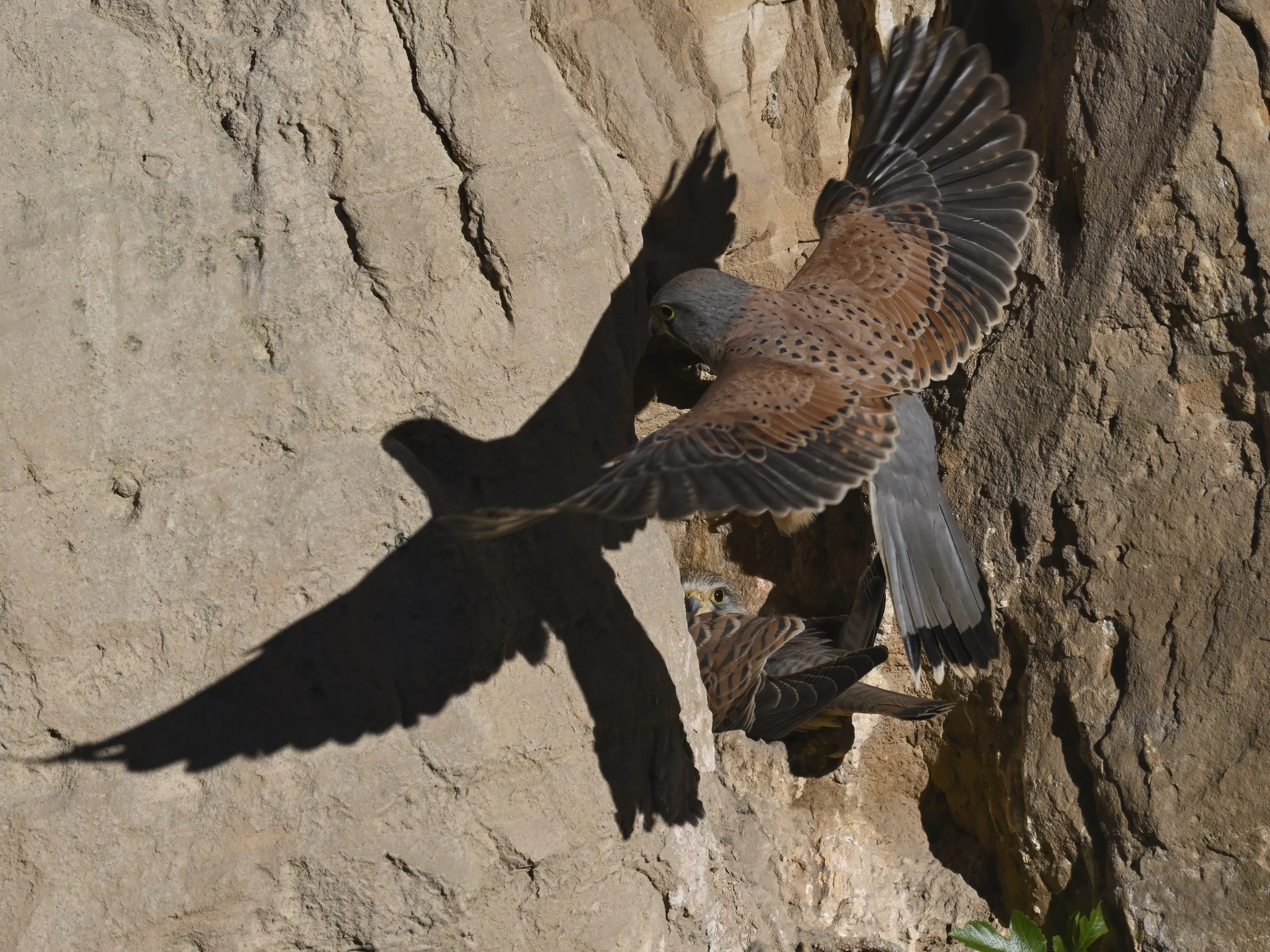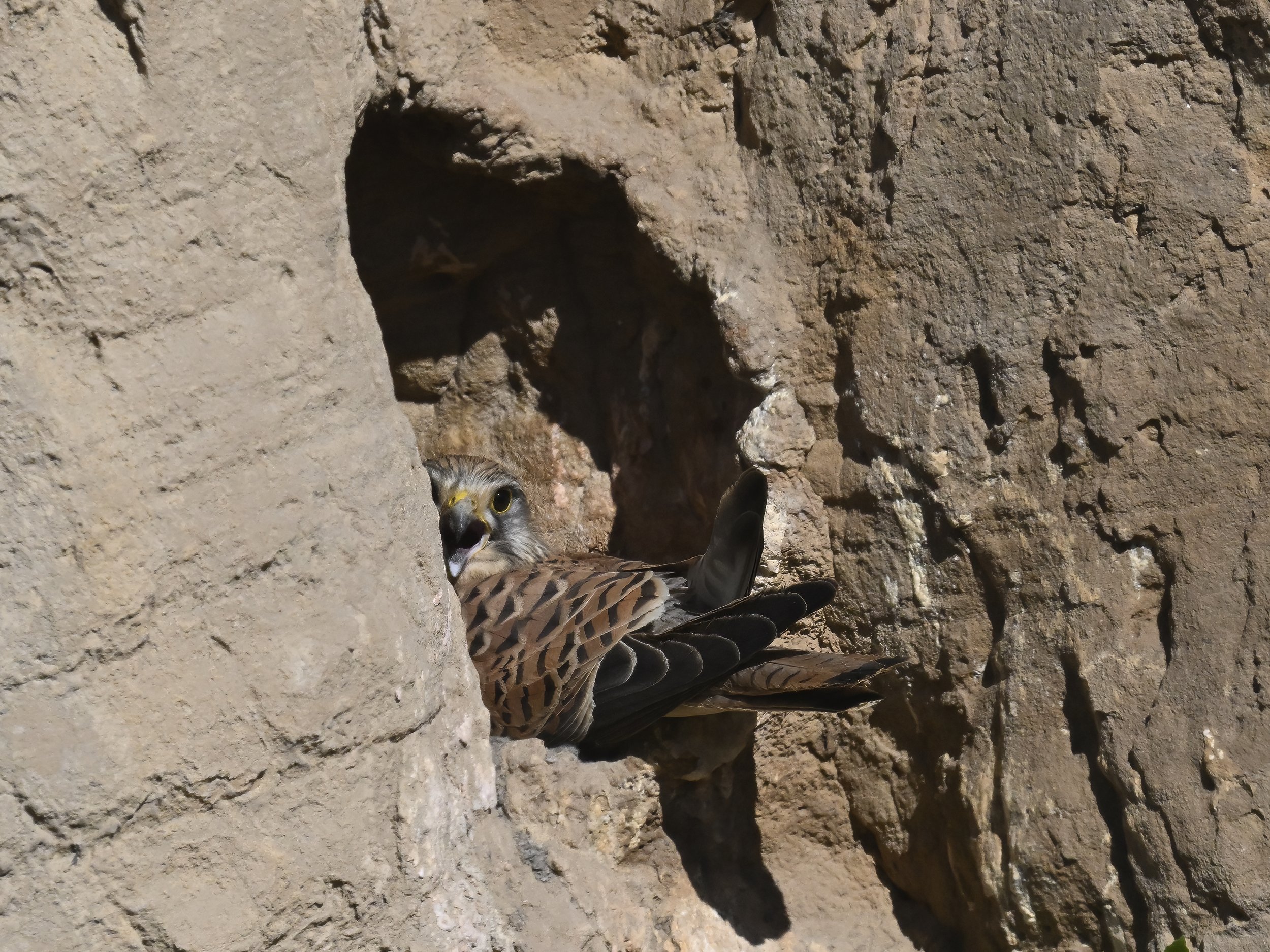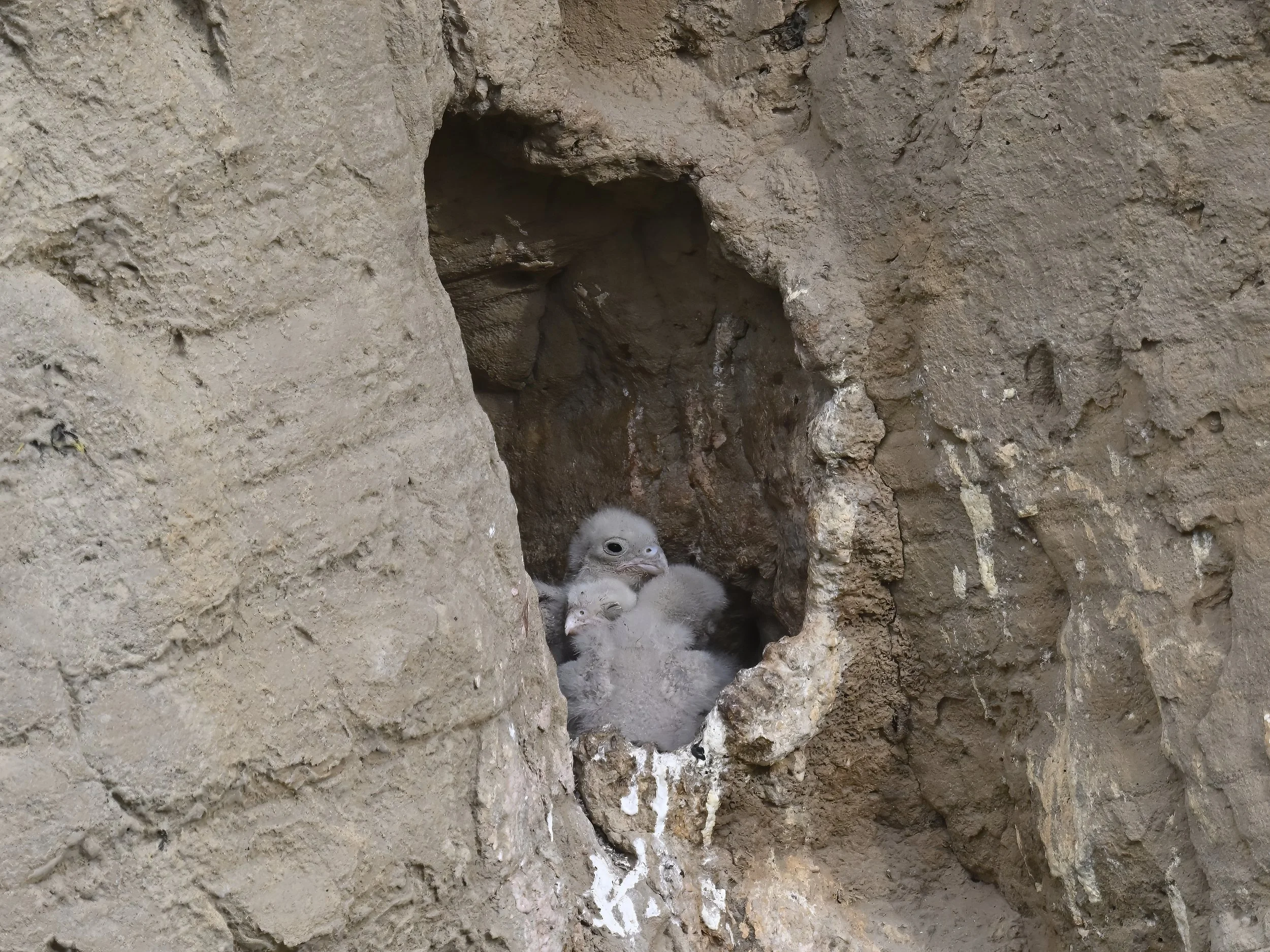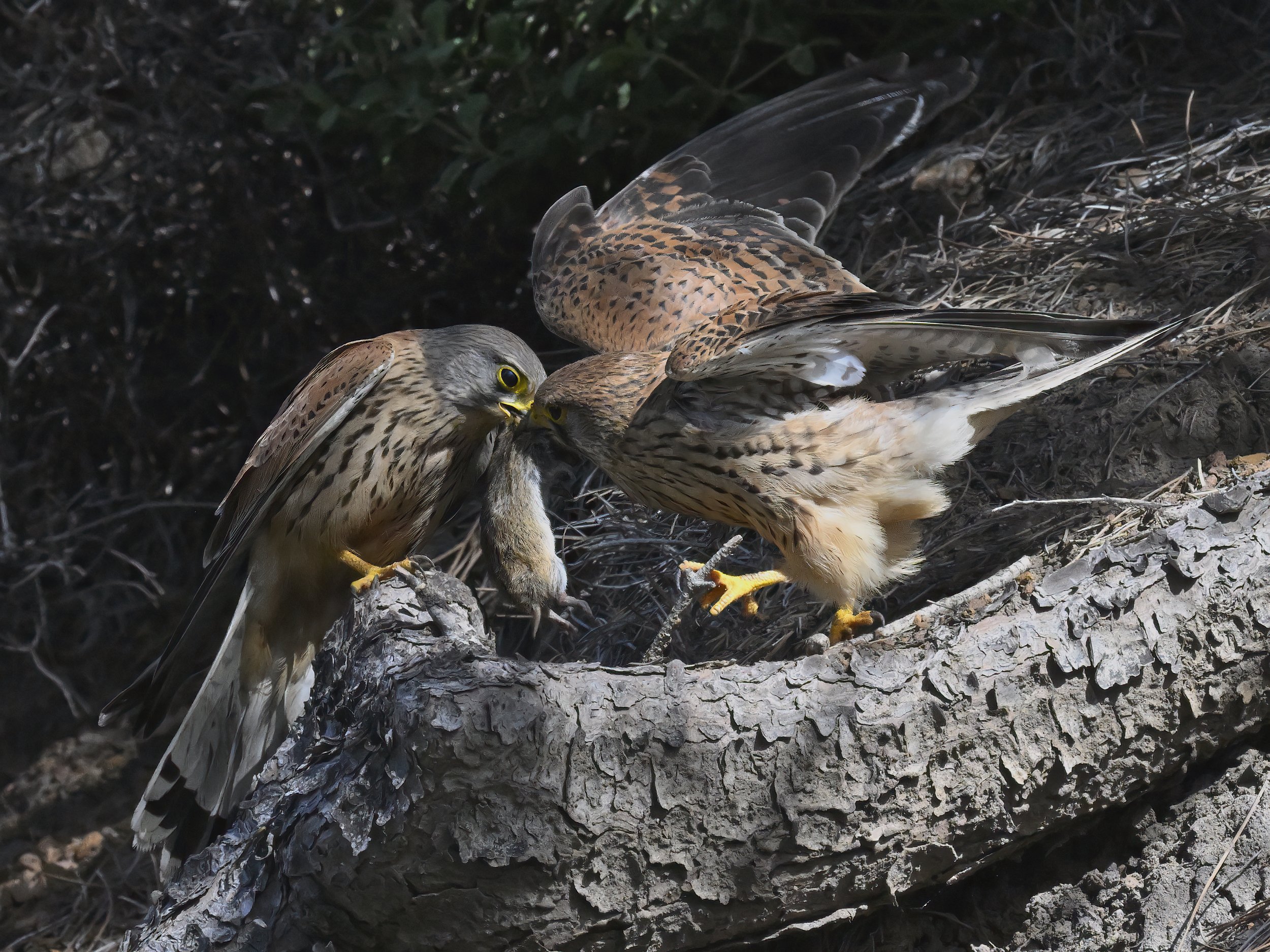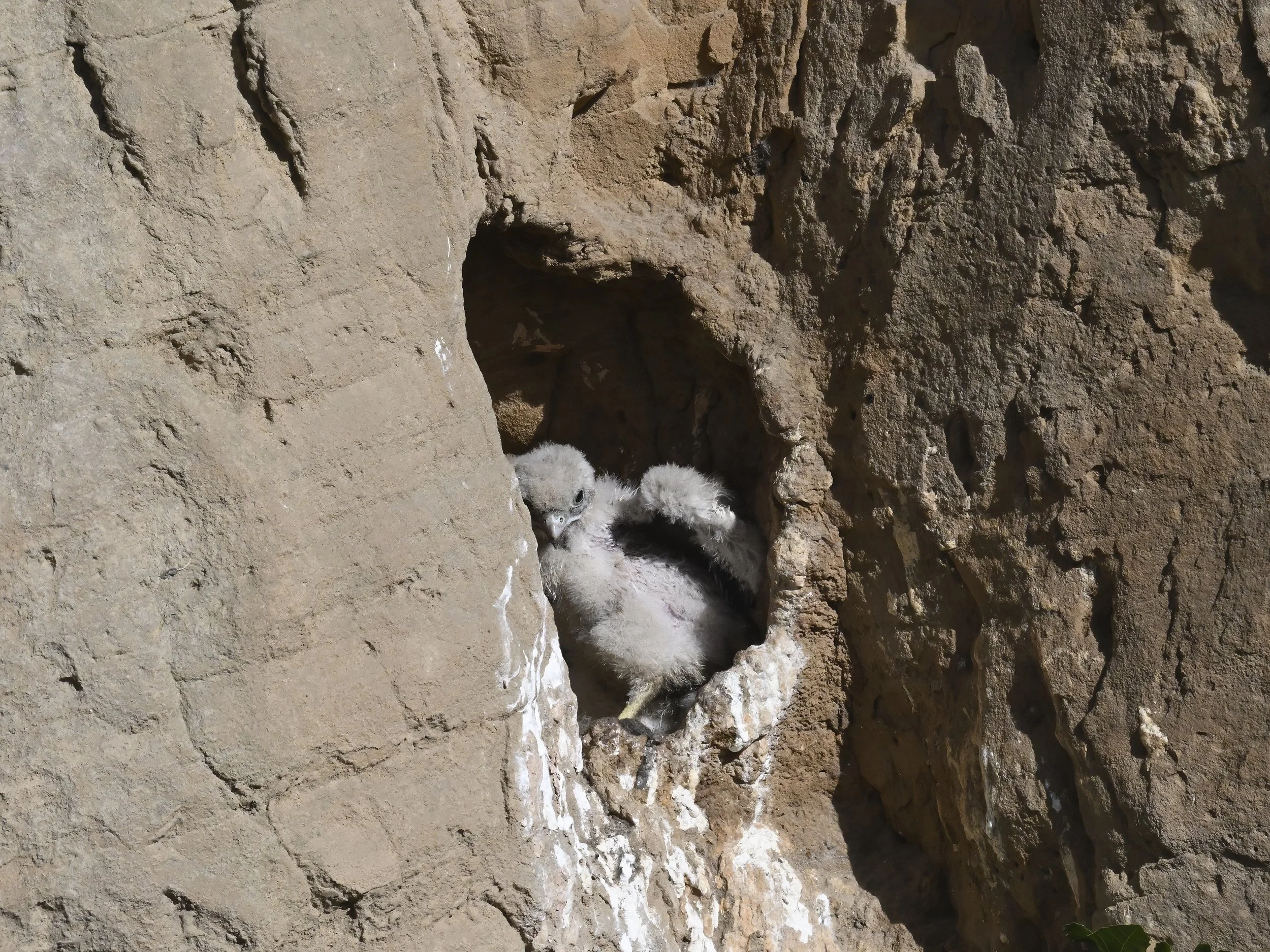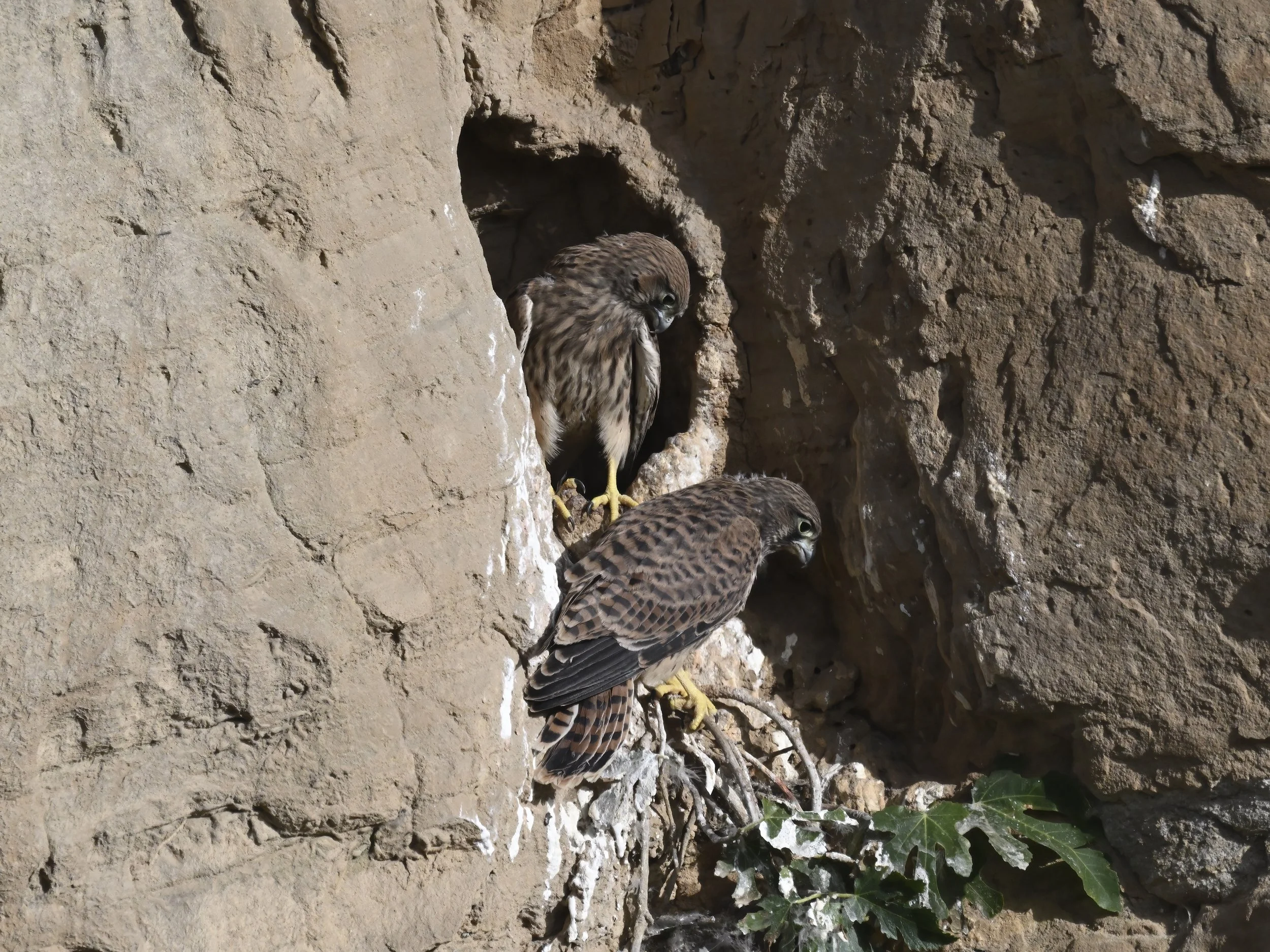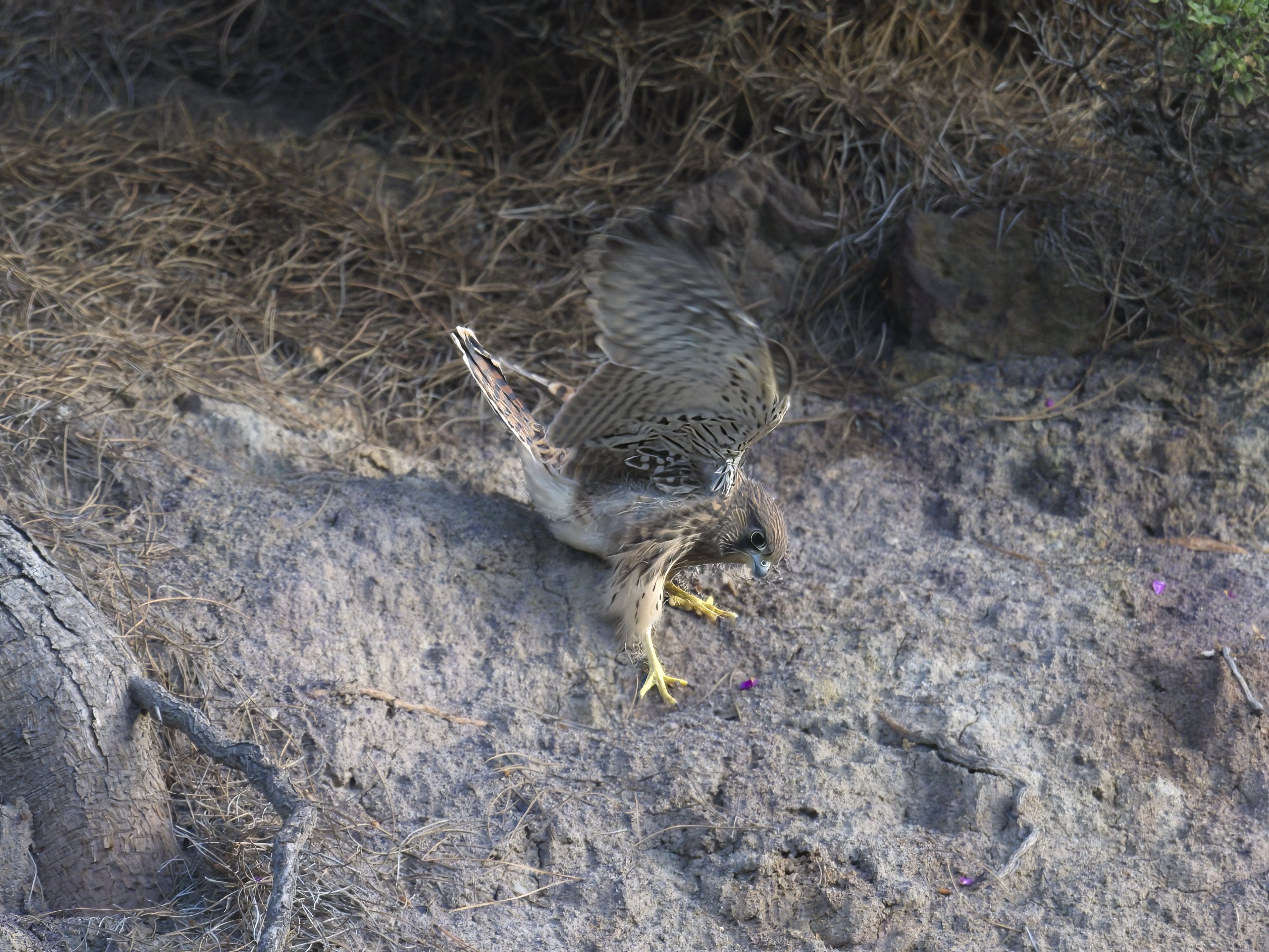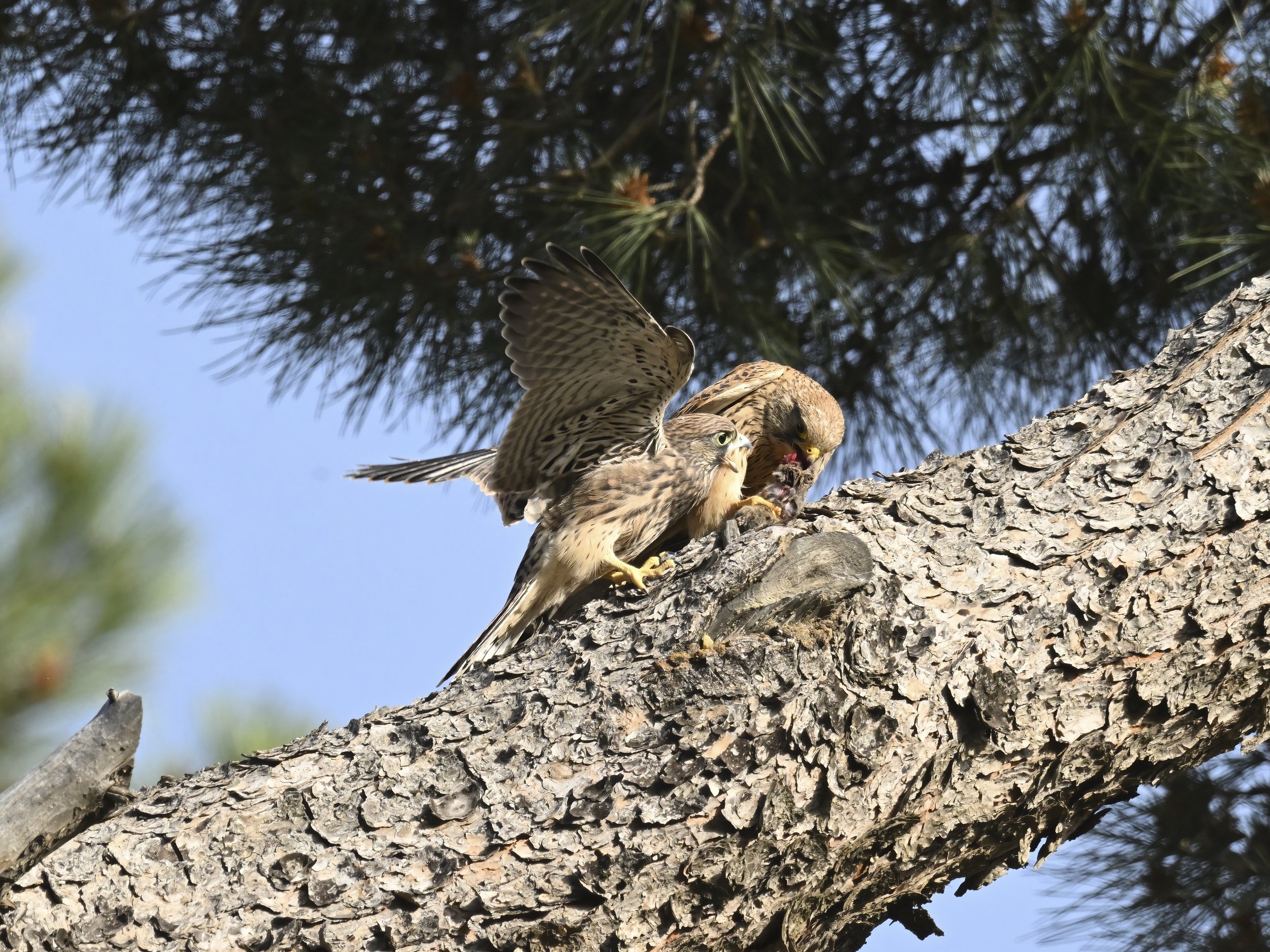Wildlife Photography Lebanon
Eurasian Kestrel Story
We were monitoring a pair of Eurasian Kestrels (Falco tinnunculus) as we discovered their nest and started on our journey documenting the process from eggs to fledglings.
Bird's nest photography requires extreme sensitivity as it is protected and forbidden in many countries. Alerting, stressing, or threatening the birds can lead them to abandon their nests. Approaching the nest, installing cameras inside, and leaving human-made equipments is prohibited. Ethical nest photography necessitates maintaining a significant distance with minimal disturbance. If there are any signs of the birds being uncomfortable, it's imperative to immediately and slowly withdraw from the location.
Week 1, Incubating 2024-Mar-29
Selected a cliff for the nest, we can see four eggs
Incubating the eggs, it was too cold to move
2024-Mar-29 Eggs Incubation
Week 2, Defending The Territory 2024-Apr-06
We started the day with a hooded crow flying near the nest and the male kestrel had to defend the territory.
2024-Apr-06 Announcing presence and territory ownership
Then checking on the family
Next week's weather forecast predicts rain for four consecutive days, which could pose a significant threat. If water seeps into the nest, it could potentially ruin the eggs, jeopardizing the survival of the eggs inside. I'm deeply concerned about this possibility and hopeful that the nest and its inhabitants will weather the storm unscathed.
Reports are coming in from the area indicating heavy rain, including hail. I'm checking the weather forecast every hour, and it doesn't look good.
Week 3, Changing chores 2024-Apr-13
2024-Apr-13 Male Kestrel happy they survived the heavy rain
You better come to the nest and take care of the eggs, I need ME TIME!!!
Am not sure am ready….
2024-Apr-13 Female Kestrel adjust its position to leave the nest
The anticipation is unbearable, a relentless torment that stretches from week to week until I return to my work. Endless scenarios play out in my mind, countless 'what ifs' without answers. Each day they have to survive not only nature's fluctuations but also confronting the darker side of human behavior, from harassment to hunting and poaching.
As I step onto the site, my heart pounds fiercely for a few moments until I steady myself with my camera. Ensuring the survival of these birds for yet another week fills me with relief, knowing that they are sound and safe.
Week 4, Hatching 2024-Apr-20
Strangely, the male was not there when I arrived. A full hour passed by with no sighting. I am very worried, all my demons dancing in my brain. Finally, we can hear it very closely, calling for the female to come and get her food.
2024-Apr-20 Female Kestrel leaves the nest to get her food from her partner.
2024-Apr-20, The female Kestrel changed her position to feed the firstborn. We confirmed that two eggs had hatched.
Week 6, Food Delivery 2024-May-04
All the eggs hatched, 4 little Kestrels looking active and healthy, size difference already visible, giving the first born an advantage over its siblings.
2024-Apr-27, Mom left the nest for few minutes to get some food.
Only the female decides who gets to eat first
Week 5, Nestling 2024-Apr-27
Looking healthy and strong
Week 7, Training Started 2024-May-11
2024-May-11, Mom Kestrel intentionally leaves prey in the nest so the little ones start to use their claws and peaks.
2 little ones already bigger than their siblings, they should start the flying leassons soon
Week 8, Survival 2024-May-18
One little kestrel pushed from the nest will undergo a 'Mission Impossible' to survive harsh weather conditions and avoid predators, but only if the mother keeps feeding her.
They killed one of the young ones and pushed another out of the nest.
Week 8, Survival 2024-May-22
Two kestrels have already left the nest, staying together on a tree close to the nest with their parents.
Our fallen one successfully returned to the nest, and trying to fly
Week 8, Survival 2024-May-23
The fallen one succeeded in flying away from the nest.
Mom is still helping the young one until they can fully hunt by themselves
The End
-
Nesting Sites: Eurasian kestrels typically nest in cavities or on ledges, often choosing locations such as cliffs, buildings, old nests of other birds, or even tree hollows. They may also use nest boxes provided by conservation efforts.
Pair Bonding: Once a pair forms, they establish a bond that lasts throughout the breeding season. They often engage in mutual grooming and share responsibilities in preparing the nest.
Egg Laying: The female lays a clutch of eggs, typically ranging from 3 to 7 eggs, with the number depending on factors like food availability. The eggs are usually laid at intervals of about one to two days.
Incubation: The female is primarily responsible for incubating the eggs, which usually lasts around 4 weeks. During this time, the male provides food for the female.
Hatching and Nestling Care: After hatching, both parents participate in feeding and caring for the young. The chicks are altricial, meaning they are born in a relatively undeveloped state and require extensive care from their parents.
Fledging: The young kestrels fledge the nest approximately 4 to 5 weeks after hatching. However, they may continue to depend on their parents for food and protection for some time after leaving the nest as they learn to hunt and become independent.
Post-Breeding Season: After the breeding season, Eurasian kestrels may disperse from their breeding territories, particularly young individuals. They may also undergo molt during this time to replace worn feathers.
-
Egg: The initial stage of bird development begins with the egg. Fertilized eggs contain an embryo, which develops into a chick under the right conditions (proper temperature, humidity, and incubation). The eggshell provides protection and nutrients to the developing embryo.
Embryo: Inside the egg, the embryo develops over a period of time, usually ranging from a few days to a few weeks, depending on the species of bird. During this stage, the embryo forms organs, tissues, and develops recognizable features such as limbs, beak, and feathers.
Hatching: Once the embryo has fully developed, the chick begins to hatch by breaking through the eggshell using its egg tooth, a small projection on the tip of its beak. Hatching can take several hours to a day, and the chick emerges from the eggshell.
Nestling: After hatching, the newborn bird is called a nestling. Nestlings are typically naked or covered in down feathers and are entirely dependent on their parents for warmth, food, and protection. During this stage, the parents feed the chicks a diet of regurgitated food.
Fledgling: As nestlings grow, they develop feathers and become fledglings. Fledglings are still dependent on their parents for food but are more active and may leave the nest, hopping around on nearby branches or on the ground while learning to fly. They continue to be fed by their parents during this stage.
Juvenile: Once the bird has mastered flying and is fully independent of its parents for food, it enters the juvenile stage. Juvenile birds often resemble adults but may have different plumage patterns or colors. They continue to develop and refine their flying and foraging skills during this time.
Subadult: The subadult stage is an intermediary stage between juvenile and adult in some bird species. This stage occurs after the bird has fledged and left the nest but before it reaches full maturity.
Adult: Finally, the bird reaches adulthood. It has developed its adult plumage and is capable of reproducing. Adult birds may migrate, establish territories, and engage in courtship behaviors to find mates and reproduce, thus completing the life cycle.
-
Gray head VS brown head
The male has blue-grey feathers on its head and tail and chestnut-brown feathers on its back, whilst the female's feathers are brown.
Gray clear tail VS bars on the tail
An adult female sports dark bars across its tail, whilst an adult male has an all grey tail with a deep black band at its base.
-
After thoroughly scouting the location and testing various shooting spots, I've confirmed the feasibility of the documentary project. The location is conveniently accessible by car and offers favorable lighting conditions, enabling us to capture shots at eye level or lower for optimal perspective and exposure to natural light.
In researching the Common Kestrel, it's evident that we'll have approximately two months for shooting, with planned weekly visits providing ample time to document each step of the process.
-
Bird's nest photography requires extreme sensitivity as it's protected and forbidden in many countries. Alerting, stressing, or threatening the birds can lead them to abandon their nests. Approaching the nest, installing cameras inside, and leaving human-made equipment is prohibited. Ethical nest photography necessitates maintaining a significant distance with minimal disturbance. If there are any signs of the birds being uncomfortable, it's imperative to immediately and slowly withdraw from the vicinity.
Don’t treat the spot as if it's yours; we are the visitors and should keep to ourselves.
Don’t overstay; make it short trips, 2 hours after sunrise maximum.
Avoid sudden movements of the lens, even if they are flying close by; don’t chase them with your camera.
Weekly trips (once a week) to follow the progress will be enough.
Do it alone, to avoid unnecessary movements in the car.
Read about your subjects to anticpat their moves and what will happen next.
Keep the project to your self, people strangely acts like monkeys when its critical.



